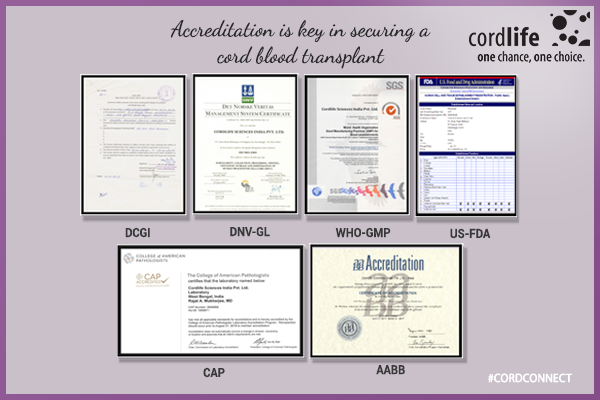Table of Contents
Umbilical cord blood plays a potent role in treating life-threatening ailments like sickle cell anaemia, lymphoma, leukaemia and the like. Today, over 25,000 patients round the globe have had cord blood transplants since their parents had a long-term vision that made them donate the child’s umbilical cord blood to a prominent cord blood bank.
In fact, most ace doctors and health experts suggest that cord blood must be preserved until there’s need of it. Medical science presently believes that cord blood can be preserved for an indefinite time, so that it can be of use for several generations. Stem cell transplants having 40 years as the average age, the longer the cord tissue and cord blood is stored, the maximum will be its use. And this where the accreditation process ties in!
Who Manages the Cord Blood Banking Facilities?
Simply put, the cord blood banks get regulated by the United States Food and Drug Administration (FDA). It is essential for all cord blood banks to register their name with the FDA and welcome the recurrent inspections and adhere to the regulations listed by this body. Furthermore, there are several other cord blood banks, comprising of the Core 23 BioBank, that willingly place themselves for other additional regulation under reputed accrediting bodies such as FACT and AABB.
Recently, AABB accreditation is considered to be the standard or key to cord blood transplant globally, where about 70% of the AABB accredited cord blood banks are located outside of U.S. As an authorized and authentic accrediting organization for cellular therapies and transfusion medicine round the word, the AABB gives a patient ear to the stories from various members of blood banks, hospitals and other bodies. Listening, it is said is a vital aspect of AABB’s accreditation process and programme.
As a group of AABB assessor approach an organization, basic checklists aren’t what they depend on! On the other hand, their key responsibility is to enquire, observe, gather data, build connections and provide a direct feedback on the organization’s accomplishments in catering to AABB’s technical and quality management par. Other than the formal reviewing process, there’s a peer-to-peer knowledge sharing process that takes place along with other discussions related to the best practices. Furthermore, it is interesting to note that the accreditation programme of AABB is accredited by International Society for Quality in Healthcare, a notable global organization that oversees and accredits accrediting bodies.
In fact, back in 2016 it a Dubai based AABB accredited cord blood bank successfully delivered a life-saving treatment of a 7-year-old boy, by providing stem cells that has been obtained from the umbilical cord blood that was saved 3 years before the birth of his sibling. This 7-year-old boy, who’s the elder brother, was diagnosed with major beta thalassemia, which is a blood disorder that might require daily blood transfusions and in a lifetime, can branch out into other various serious health hazards and ailments.
There are several reasons why AABB accreditation is considered the best practice for cord blood transplant. This accreditation programme makes use of a risk-solving approach that needs a meticulous evaluation by an AABB assessor to be on-site, examining the facility’s policies, processes and procedure to discover any possible marks of non-conformity. At the time of this accreditation process, the institutions gain from customized help rendered by a technical specialist at the AABB’s accreditation department. It is this specialist who in turn guides and assists the institutions and its team members on the accreditation process, giving answers to required queries and authenticating procedure followed and documents maintained. The verification process is strict, so that cord blood transplant taking place from the cord blood bank poses no health hazards and other discomforts.
